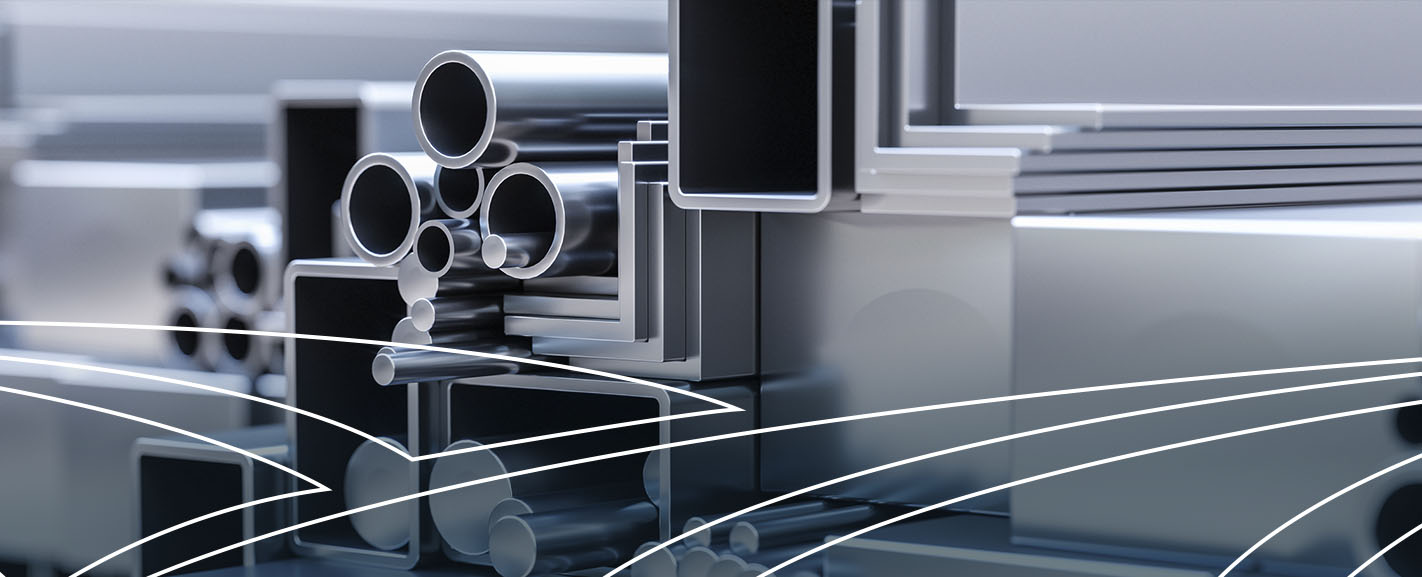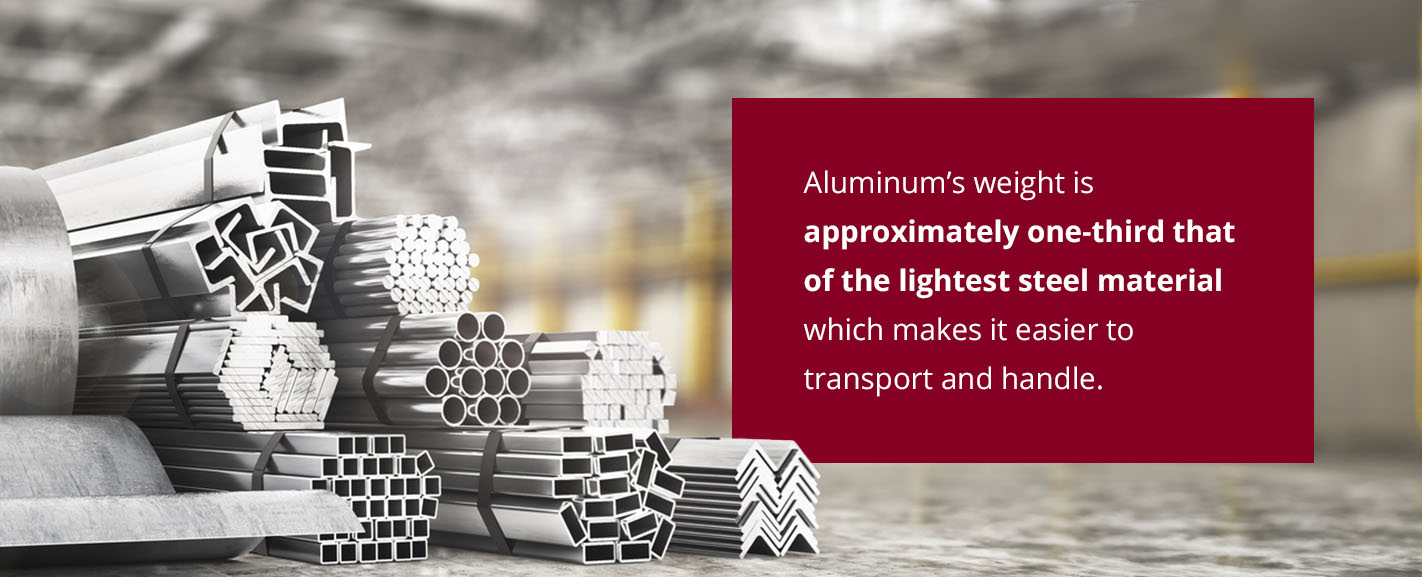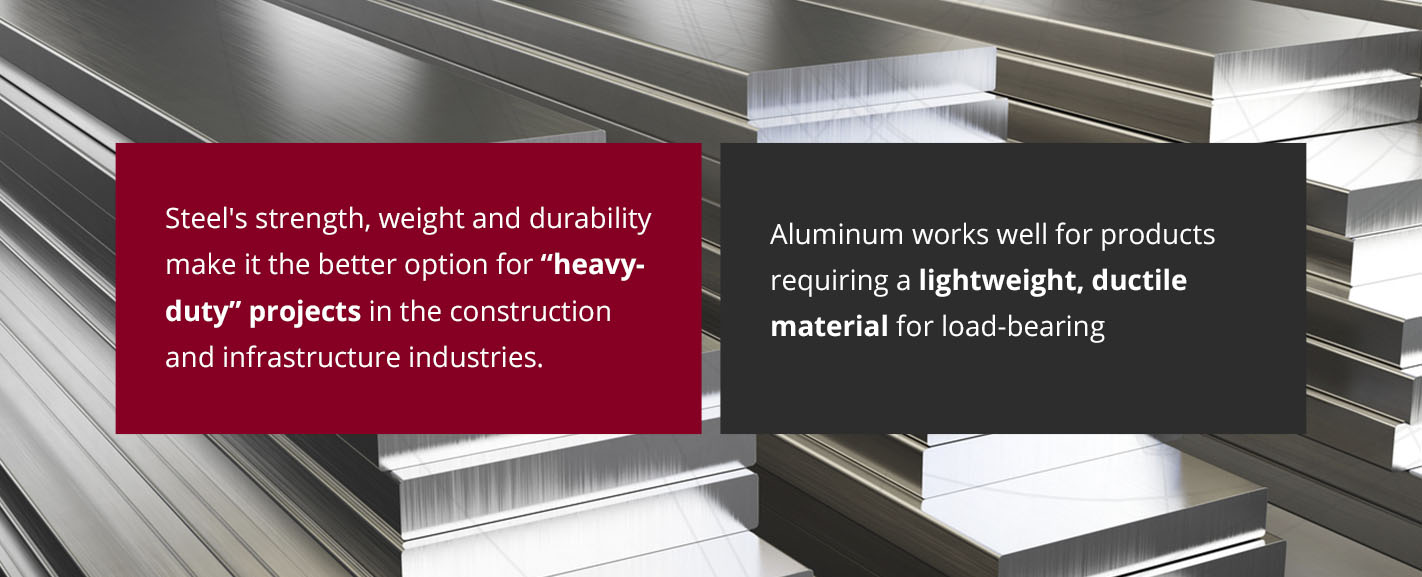
Updated June 24, 2024. Originally published July 20, 2021.

Are you trying to determine which metal to use for your manufacturing processes? For many manufacturers, the choice comes down to aluminum or steel. These materials’ beneficial properties make them ideal for numerous applications in many industries.
Below, we assess the main differences between aluminum and steel to help you decide which is better for your applications.
A common generalization is that aluminum is less expensive than steel, but this is only partially true. While stainless steel typically costs more than aluminum, mild and carbon steel materials tend to be cheaper, leaving aluminum somewhere in the middle.
Generally, steel and aluminum costs vary depending on factors like supply, demand, fuel costs and the price and availability of the metal ores. Aluminum often costs more per pound because the bauxite ore is more expensive than the iron ore used to mine steel.

Steel is much denser than aluminum, which also makes it significantly heavier. Aluminum’s weight is approximately one-third that of the lightest steel material. The aluminum’s lightweight nature makes it easier to transport and handle. This feature also reduces shipping costs, making it an economical choice in many industries.
Steel is significantly heavier than aluminum due to its increased carbon content. The extra weight makes carbon exceptionally durable and resistant to deformation, bending and warping when exposed to force, weight and heat. Mild steel is closer in weight to aluminum than carbon and stainless steel, but it lacks the same level of strength and durability.
Steel is generally more durable than aluminum. Carbon steel, in particular, is strong and heavy due to its high carbon content. However, because of its lighter weight, aluminum may have a higher strength-to-weight ratio than some mild steel versions. It’s malleable enough to take various shapes, including thin sheets and wires.
Steel’s hardness reduces its malleability, making it difficult to bend and form custom shapes without jeopardizing the material’s structural integrity. Aluminum’s flexibility and high strength-to-weight ratio make it more suitable for some metal fabrication projects, while steel’s strength and robustness make it perfect for heavy-duty applications.
While aluminum offers good corrosion resistance compared to most other metals, it can corrode in some situations. For example, exposing it to coastal environments where the humidity contains salt deposits will result in white rust — a light-colored, powdery deposit.
Aluminum’s corrosion and rust resistance result from its extremely low iron content. However, with constant oxygen exposure, aluminum surfaces corrode subtly, causing them to lose their shine and become rough.
Steel is more susceptible to rust because it contains iron, which triggers oxidation when exposed to oxygen, forming a flaky, corrosive layer of rust. Steel’s corrosion resistance depends on the chromium content in the specific steel type. For example, stainless steel contains high chromium content, providing excellent corrosion resistance. but is still prone to rusting.
The other steel forms require additional chromium coatings to form a stable and passive oxide film on the surface that prevents corrosion. Rust and corrosion are undesirable because they affect the longevity of products made from alloy steel and other metal forms with low chromium content.
The intended use of the finished product or part also impacts whether aluminum or steel is the more appropriate metal for your manufacturing or fabrication project.

Steel’s strength, weight and durability make it the better option for “heavy-duty” projects in the construction and infrastructure industries. It also provides the essential strength and stability required for architectural metal equipment used in commercial and residential buildings. Steel is the preferred option for manufacturing:
Aluminum works well for products requiring a lightweight, ductile material for load-bearing applications. Its corrosion resistance and strength-to-weight ratio are ideal for various applications in numerous industries, including automotive, aerospace and marine. Here are some of the products often manufactured using aluminum:
PBZ has worked with metals in manufacturing since 1947, and we have the experience and expertise to offer resourceful manufacturing solutions, whether it’s aluminum or steel. We’re a one-stop operation that can manage every aspect of your project, including engineering, manufacturing, finishing, assembling and shipping.
With our comprehensive range of abilities, we help you reduce the layers from your supply chain, minimize completion timelines and reduce your manufacturing costs. Contact us or call 717-584-8767 to learn more about the differences between aluminum and steel today.